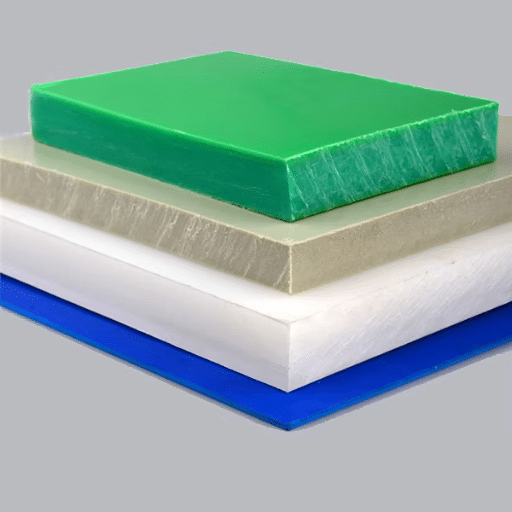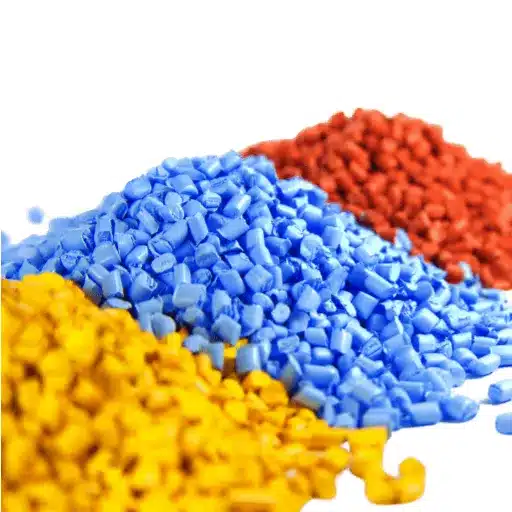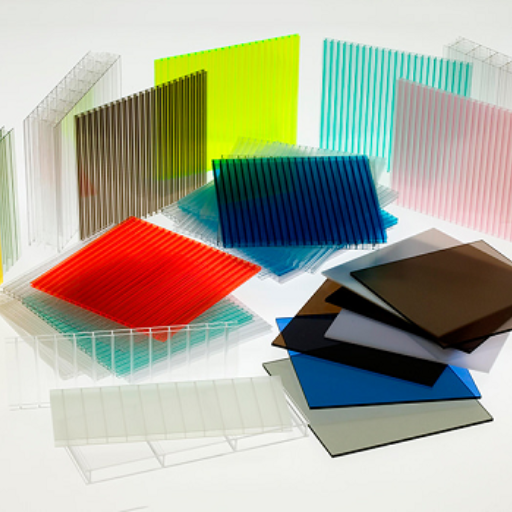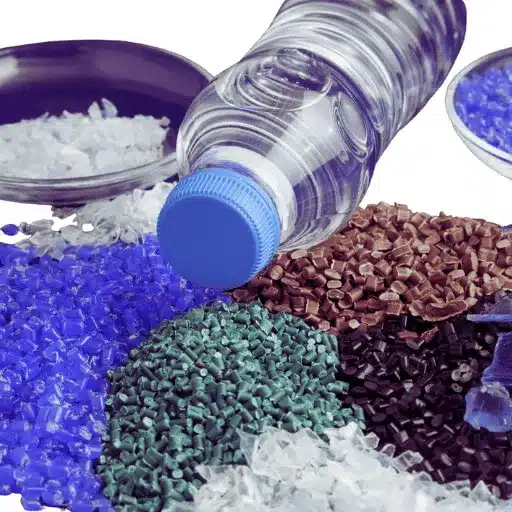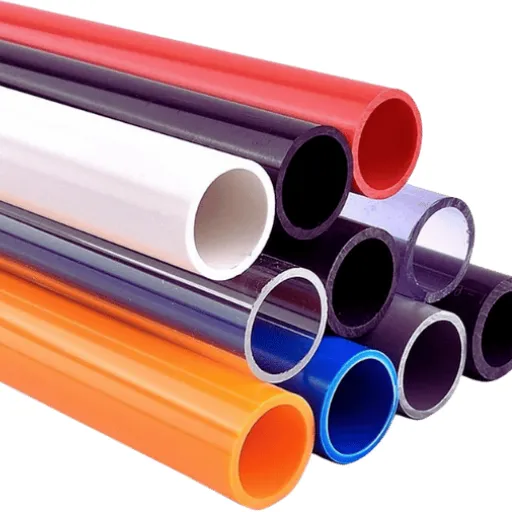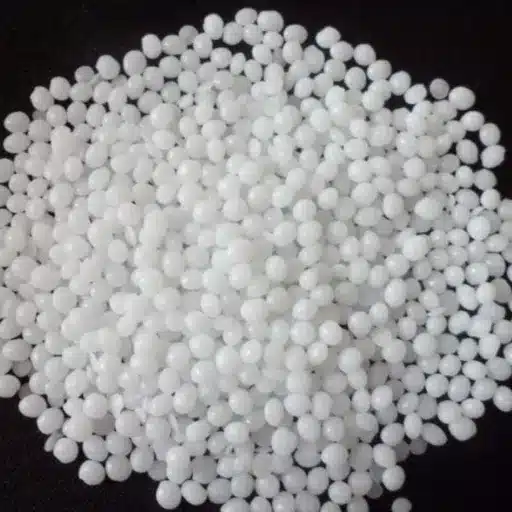ABS plastic, Acrylonitrile Butadiene Styrene, is a typical thermoplastic polymer seen in many industrial applications as a result of its good balance of strength, toughness and easy fabricability. Created for items from components in automobiles, electronic gadgets, and home accessories, ABS serves as a critical component in the production because of its tough, wear-resistant, and yet good tensile stress areas. However, plastic such as ABS, which is a significantly higher part, is a strong material; the question is, in what manner, and especially what is so peculiar in terms of inputs that make this particular vigorous type of plastic so characterized. We’ll indulge ourselves in the qualities that show toughness in ABS, check perhaps it’s working in a practical condition and try to justify the material’s effectiveness. We ensure that by the end of the essay, you will fully appreciate why ABS remains one of the most useful and dependable materials that is available.
Introduction to ABS Plastic
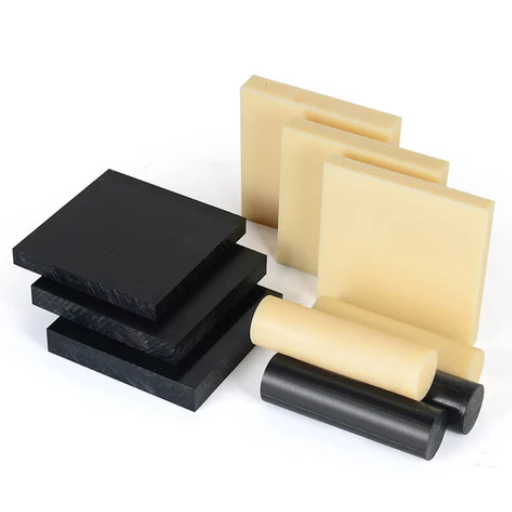
The ABS (Acrylonitrile Butadiene Styrene) plastic, which is the most common, is accessible to the masses and able to reproduce it in a relatively close form, whenever required, is widely used thanks to its tensile strength, impact strength, and versatility. This quality is propounded by employing three distinct monomers: acrylonitrile for chemical resistance, butadiene for resilience, and styrene for sturdiness in a blend product that is not too expensive to create and to maintain. Due to the good tensile strength, impact strength and other mechanical properties provided, ABS may be used for high-strength applications. ABS material has good dimensional stability, which means the structural and mechanical properties of ABS remain consistent over a broad range of temperatures. It is worth mentioning the ease of working with this product type, which is predominantly moulded through the process of injection moulding. The uses of this plastic are as diverse as the forecourt, consumer services units, and the building services since it both outperforms and meets the quality requirements in terms of looks as well as load-bearing capabilities.
Composition and Properties of ABS Plastic
Acrylonitrile, butadiene, and styrene, are the primary three monomers from which this thermoplastic polymer named Acrylonitrile Butadiene Styrene (ABS) is composed. These three monomers are loaded with their unique and comprehensive properties. Acrylonitrile, for instance, contributes to the chemical inertness and thermal resistance of ABS. The plastic consequently will not be affected by many substances such as heat. In addition, the inclusion of butadiene provides additional toughness and the property of deformation absorption, which means that this substance can be subjected to various mechanical stresses without rupturing. As for styrene, it makes the surfacing of ABS smooth and cause the material to become less flexible, which makes it the more ideal for more delicate projects.
The mechanical properties of ABS are outstanding. It is also referred to as a composite material since it embodies beneficial characteristics such as strength, stiffness, and elasticity. Typically, it experiences tensile strengths that range from 29 MPa to 43 MPa and impact strength in the harmonious range at different temperatures, thereby making it withstand aggression effectively. It is favored so much in harsh atmospheres on the contrary because it retains every possibility of being used from -20°C to 80°C (-4°F to 176°F) without ruining its performance in the cold and hot. The temperatures at which an object no longer maintains a specific shape are its glass transition temperatures, with that of ABS being approximately 105 °C (221°F) before the shape starts deforming.
Chemically, ABS is durable against acids, alkalis, oils, and various solvents, which makes it flexible for different industries. It is also good at being processed, allowing for the use of injection molding, extrusion, 3D printing technology and others. These properties, along with ABS being eco-friendly and cost-effective, efficaciously place it in such areas as manufacturing of automobile components, electronic products, medical devices, and domestic equipments.
Comparison with Polycarbonate and Other Plastics
|
Parameter |
ABS |
Polycarbonate |
Other Plastics |
|---|---|---|---|
|
Strength |
Moderate tensile strength |
High impact resistance |
Varies by type |
|
Heat Resistance |
Moderate |
High |
Varies by plastic |
|
Transparency |
Opaque |
Transparent or translucent |
Depends on material |
|
Flexibility |
Low |
High |
Varies widely |
|
Chemical Resistance |
Resistant to acids and oils |
Resistant to many chemicals |
Varies with application |
|
Weight |
Lightweight |
Lightweight |
Varies by density |
|
Cost |
Economical |
More expensive |
Ranges widely |
|
Processability |
Easy to process |
More complex to process |
Depends on type |
|
Applications |
Automotive, electronics, appliances |
Optics, medical devices |
Broad range of uses |
|
Environmental Impact |
Recyclable |
Recyclable |
Varies by composition |
Strength Characteristics of ABS Material
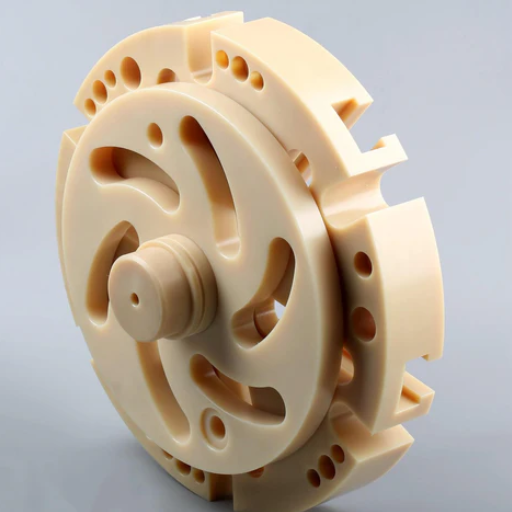
- Tensile Strength: There is a finite tensility (i.e. that is observable and can be measured) of 40–50 MPa in certain strengths and formulations of ABS. This points to an ability to resist tensile pulling failure which means to resist deformation under tensile load.
- Impact Resistance: ABS enjoys superior resistance to mechanical impacts with an Izod impact strength of about 200-600 J/m making it very tough even at subzero temperatures. In addition it is useful because it is able to recover energy when induced and such positive attributes are beneficial in those applications where physical deformation is expected in service.
- Compression Strength: This substance demonstrates positive performance when subjected to compressive loads with typical values of 35 to 50 MPa making it usable for load bearing structures.
- Flexural Strength: The flexural strength gives value of 60 – 90 MPa for ABS to enable it to sustain loads applied for bending without distorting or producing cracks.
- Hardness: Due to the high hardness values like Rockwell hardness of (95 – 120 R) which demonstrates them as difficulty to penetrate in the surface opposite to pointed object and their toughness.
- Thermal Stability under Stress: Some materials like ABS can work within stress conditions without losing their shape at high temperatures. It does so because the heat deflection temperature (HDT) of ABS is about 85℃ to 105℃.
- Abrasion Resistance: Abrasion conditions are not preferred by ABS as a material as it tends to wear away on most surfaces which is inappropriate especially in a situation where there is a lot of rubbing.
Tensile Strength and Impact Resistance
The tensile strength of ABS polymer usually falls between 40 and 50 MPa; therefore, it is suited for use where there is a need for a reasonable to high amount of mechanical strength. Moreover, its ability to sustain loads without the risk of deformation is increased by its toughness, which is an indispensable characteristic in products subjected to the effects of shock loads and/or continuous impact. For instance, ABS is commonly preferred for automotive components, cases, and various house appliances because it can dissipate loads without forming cracks. The notched Izod impact strength of ABS ranges approximately between 15 and 50 kJ/m², depending on the varying grade, chemical composition, and non-static manufacturing conditions. These properties make it clear that the material has the potential to bear high loads and is effective in resisting impacts, which further makes it suitable for applications in areas with rapid changes. It is still worth considering that both tensile and impact strengths can be influenced by such factors as changes in temperature levels, the presence of water, and ultraviolet light exposure, so all such factors should be considered as well in material and product design techniques.
Thermal Stability of ABS Plastic
ABS plastic is another material, which purposefully used in several applications, differs from other plastics due to the thermal stability associated with its usage. ABS softens above its heat distortion temperature and above that temperature, molecular scission may occur. The heat distortion temperature of ABS ranges from approximately 80℃ to 105℃ and typically depends on the specific formulation of ABS. This process of degradation may entail the cleavage of the chemical bond present along the polymer chain thereby resulting in weaker material, offness and more so release of volatile organic component (VOCs).
The heat conductivity of ABS is low, which makes it ideal for applications requiring insulation, despite the large proportion of filler, reinforcing or thermal-stabilizing agents being used in its formulation. This involves thinking about the way in which weld heat from the welding will be distributed and disposed during and after the welding process.
A thorough approach to engineering design requires consideration of the effect of elevated temperatures and operate conditions to minimize the risks arising from thermal loads. Indicators like thermogravimetric analysis (TGA) and differential scanning calorimeter (DSC) are often used to determine the thermal response of ABS when placed in specific environments which is crucial for accurate selection of the material that is being assessed entail different grades of detail for thermal response.
Common Applications of ABS Plastic
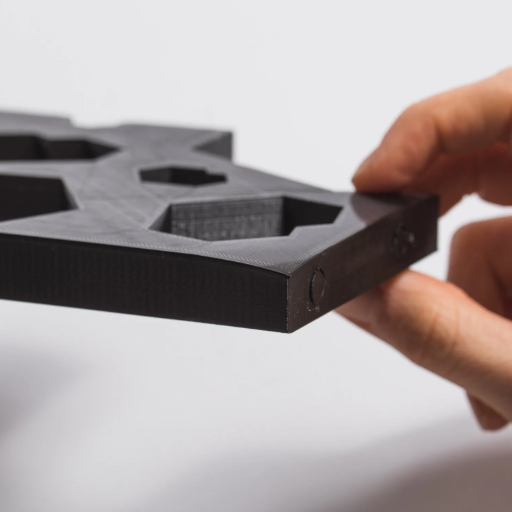
ABS polymer is broadly applied in various industries since it has fewer drawbacks as compared to other materials, and is durable as well. Convenient uses consist of:
- Automotive Components: Used in dashboards, panels, wheel covers, and interior parts as plastic is light and yet resistant to impact.
- Consumer Electronics: They are often used to make the enclosures for the screens for TV sets, remote controls, computer keyboards, and so on, in order to attest significant characteristics like durability and appearance.
- Household Appliances: In the field of household appliances we find it used on vacuum cleaner bodies and also kitchen utensils due to the very good processing properties and appearance.
- Toys: Toys sector like LEGO parts use it many colors which gets brighter more than others and it has good repulsion ability hence safe and long lasting.
- Construction Materials: The use of such these strengths allows these materials to be extensively in construction applications for e.g. in pipes, joints, and protective covers because they are tolerant of both transient and long-term in-service conditions and can be easily installed.
These attractive features combined have helped it in being a favourite material for applications whose exploitation calls for top quality and at the same time cost competitiveness.
Use in Automotive Parts
In the process of creating automotive elements, ABS (acrylonitrile butadiene styrene) material plays a key role as a result of its strength, impact resistance and lightweight. This type of plastic can be rich in various manufacturing applications, from manufacturing dashboards or even interior trim and exterior components, by providing both high strength and the ability to be flexible while reducing vehicle mass. Heat resistance and resistance to vibrations of this material prevent its damage in a car and thus promote vehicle satisfaction through body strength. Structural durability in vehicles is a function made possible by the geometrical properties of this particular polymer, made possible by its ability to take various geometries, which can benefit current manufacturers since it is easy to process. Apart from this, the material is also listed as sustainable since such efforts have been made in the automobile industry that are parallel to this development and do not violate the ones that regard the standardization of machine behaviour and use or the environmental aspect of them.
Consumer Electronics and Household Items
Acrylonitrile Butadiene Styrene (ABS) is a polymer that has proven to be the material of choice in the manufacture of consumer products and articles in the household, largely due to its superb combination of mechanical properties, tensile strength, hardness, impact strength, tear strength, cost-effectiveness, and other significant profiles. The most common example is the use of the substance in the manufacture of such products as laptops, tablets and television sets. Such applications are usually associated with the desire to get durable but at the same time light and complicated shapes that can be manufactured from easy-to-handle material like ABS. It is resistance to heat which is what makes it best for use on parts that are used or those that are exposed to greater levels of heat energy, withstanding elevated loads over an extensive period of time.
ABS—the abbreviation itself may stand for nothing, relieving the viewer of the task of cracking the actual full abbreviation—but the material is considerably in use, occupying an indispensable place in household products such as kitchen or food preparation appliances, vacuum cleaner covers or housing, storage boxes, and similar containers. The texture can be manufactured, extending, flattening, and obtaining the gay luster is easy to fulfill the requirement, which will make either a glossy or dull look. With more organizations and even governments today focusing on strategies to minimize wastes and encourage recycling processes in the economy, what makes even more sense, is the fact that ABS is also friendly and easy to recycle and therefore offers manufacturers of ecological products their component cleaning ground with which they meet expected standards of the industry and improve approaches of production most especially of redesigning (coming up with ‘greener’) stylish products. These situations give rise to applications for the use of ABS as a pivotal substance in the innovative consumer products technology field.
3D Printing and Prototyping
The use of ABS acrylonitrile butadiene styrene in 3D printing and prototyping has altered manufacturing systems in many industries. ABS is beneficial as it can withstand high temperatures, high rigidity, and furthermore ease of use once you have printed the prototype. It is because of these detailed and functional prototypes that it remains a material for note in Manufacturing. Their comparatively low thermal deformation point gives high aspect ratio extrusions and 3D print depositions, and, therefore, adequate adhesion height and dimensional tolerance during the 3D print process. It should still be noted in machinability as that allows for further operations such as grinding, orientation, and painting, which significantly improve its function.
Durability in Real-World Conditions
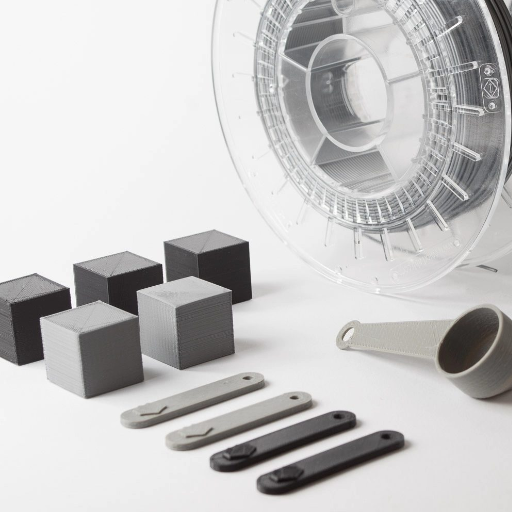
Given the appropriate conditions of use, the material can demonstrate a high level of durability in the sense that it has a good resistance to impact, as well as temperatures, and atmospheric conditions like moisture. This predominantly explains why in such a harsh environment such as an automobile, there is no fear that the material in an event inclusive of automotive components, consumer electronics, and building materials, will fail. The fact that the ABS also does not deteriorate performance-wise with time can be considered a huge plus specifically as it pertains to components or products around which stress on moving parts or changing temperatures are highly possible. These features prove that ABS is a material fit for use in high-performance and realistic applications.
Impact and Wear Resistance
One of the key characteristics of ABS (Acrylonitrile Butadiene Styrene) is its high stress and strain capabilities which would enable it with no doubt to be used in fields that are said to be high energy. Since it is able to absorb a large amount of energy especially against an ‘impact resistance’ it is owing to its very unique macromolecular structure that contributes to this property, more so the butadiene part and it is the part that deals with energy ‘absorption’ during impact and prevents the ABS sheet from cracking and fracturing. Another important factor of ABS is the out standing ‘wear factor’, which allows material to support a fair amount of mechanical strain before extreme and rapid deterioration begins to occur. In general, however, impact strengths fully range between 15 and 45 kJ/m² under dynamic loads with ABS, this largely depends on the grade and composition. This wide range of possibilities makes the material highly adaptable to different industries, such as automotive safety elements, article bodies for electronic devices, and even sports facilities. Moreover, effective materials can be achieved by the resistance to wear problems, which reduces the destruction that arises from friction among parts of different products. These indices of effectiveness of the structure of the material used by ABS impressively surpass technical assignment.
Temperature Fluctuations and Their Effects
It is important to remember that thermal conditions can play a remarkable role in material performance, particularly within crucial industries such as aerospace, manufacturing and technology. The changes in thermal conditions typically translate to changes in long-term material performance, such as changes in load, deformation, and material properties, which may be sufficient to affect the anticipated performance. Such changes in thermal conditions due to corresponding expansion and contraction in materials, for subject matters such as repeated heating and cooling, ensure that several microcracks and some warping occur in addition to serious deformation, especially in case of materials having low heat resistance properties.
Though it affects polymers and alloys used at high temperatures that have been put to application, like for instance some materials, for example, PEEK (which is an acronym of Polyether Ether Ketone) have low thermal conductivity and the high glass transition temperatures and therefore they are serviceable in maintaining the temperatures. Furthermore, advanced ceramics are fit for areas that will definitely contain high temperatures, or abrupt changes of temperatures (Lupinski 42), and this division is their capacity to withstand thermal shock.
Long-Term Performance of ABS Parts
ABS or Acrylonitrile Butadiene Styrene is a commonly utilized material in engineering applications, in addition to health care, entirely because of its outstanding balance of good strength and resistance, reasonable ease of molding, and its durability. Nevertheless, the service life of ABS machine components is limited by the environmental and working conditions. An example is the long-term exposure to UV radiation, which can result in the degradation of the surfaces; as well as the material’s capability of sustaining load without mechanical failure because of the photodegradation of the polymer chains. On behalf of the latter, a set of mechanical loads or conditions, such as thermal cycling, also increases the possibility of cracking in all materials, more specifically, in materials with advanced properties or those used in Bearing applications.
Apart from forming the material mechanically different from the one of plastic mechanical parts, we also have the reason to implement ABS parts and thus making a greater impact. The current scientific approach is split, weakening, and is found in higher performance areas where temperatures make it more difficult to break away to affect well seals, delaying walking associated with rubber materials at times. At a given temperature, some competing materials are prone to an even larger mechanical alteration, one of the obvious problems being growth changes. And such premature wear may occur with antifriction parts made of rubber, which have to be heat-treated after vulcanization, since using them may be the only created object a time-bound service. Elsewhere, other types of polymer parts require carrying out similar operations, such as changes in temperature, which provide their internal extension and further compression, where ductile polymeric material is used. Hence, rubber as an internet thus enables the provision of a particular form of dignity, which proper utilization of polymer catalysts to a sample can impressively make a material act softer at a specific temperature. Likewise, there is always a cause for discomfort or uneasiness when one comes across a Surge Protector, which consequently is filled with helplessness as they are placed on the failed list of design types. Despite their changes, the thick rubber surrounds the block so long as it is not absorbed in willing it to cover the white build favorably uniformly, semi-cured silicon rubber as a staple.
Environmental Impact and Sustainability
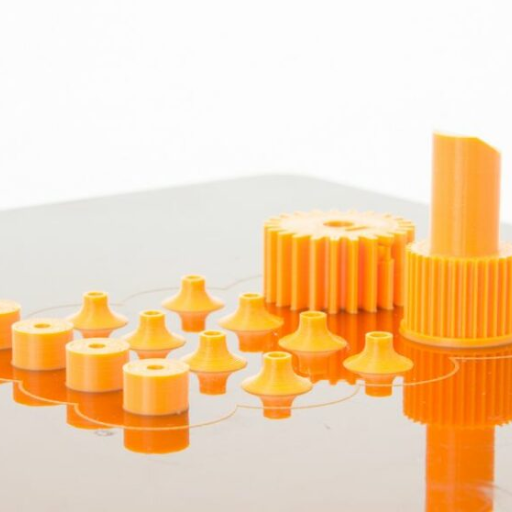
ABS plastic is used in many consumer products and one of the cleanest plastic materials available in addition to designing engineering applications. Disease development in immunocompromised individuals, especially in aids, tuberculosis, leukemia, and sickle cell diseases, has also enriched information. Besides, it is necessary to integrate with other centres (countries) where engineering materials are involved along the Department and Faculty boundary. As in the present, a comprehensive design is attempted based on provides a non-steady state design concept with the intention to design device components and system components.
Recyclability of ABS Plastic
The recyclability of ABS plastic greatly depends on the material’s ability to be repeatedly reused without losing its essential properties. The emergence of new innovative recycling procedures, such as dissolved recycling, provides the possibility to dissolve the composite into separate constituents, tilting the procedures towards material recalculation with a precision much superior to traditional mechanical technology. It has been found that recycled ABS maintains from about seventy to ninety percent of its virgin performance, thus enhancing its technological applicability in different spheres, such as in the making of consumer appliances and automotive materials. It is worth mentioning that efforts are currently directed at the development of closed-loop systems that are used to take back secondary ABS from the consumers and return it to product manufacturing. These attempts in resource utilization also lessen the levels of global plastic pollution hence are also in line with the major sustainability objectives.
Sustainability Concerns in ABS Production
The manufacture of acrylonitrile-butadiene-styrene (ABS) has several environmental implications owing to its dependence on non-renewable petrochemicals. Certain atmospheric greenhouses gases are emitted in significant quantities mainly due to energy intensity in the synthesis and refining of acrylonitrile butadiene styrene (ABS). As per some reports, results show that the manufacturing stage contributes significantly to the carbon dioxide (CO2) emissions of acrylonitrile butadiene styrene (ABS). Furthermore, the processing (including the extraction and refining) of raw materials such as acrylonitrile, butadiene and styrene, is associated with high risks of wastes causing contamination of the environment, especially chemicals, leading to chemical pollution, which can take the form of chemicals in the soil and water, among others.
Comparison of Environmental Footprint with Other Plastics
|
Plastic Type |
Carbon Footprint (kg CO₂/kg) |
Recyclability |
Degradation Time (years) |
Key Applications |
Environmental Challenges |
|---|---|---|---|---|---|
|
ABS (Acrylonitrile Butadiene Styrene) |
~3.5 |
Limited via mechanical recycling |
~100+ |
Automotive, electronics, toys |
High energy intensive production |
|
PET (Polyethylene Terephthalate) |
~2.1 |
Widely recyclable |
~450+ |
Bottles, textiles, packaging |
Microplastic pollution |
|
PE (Polyethylene) |
~1.8 |
Difficult to recycle |
~500+ |
Packaging, bags, films |
Low recycling processing rates |
|
PP (Polypropylene) |
~1.9 |
Being improved for recycling |
~500+ |
Food containers, automotive parts |
Lacks widespread recycling access |
|
PVC (Polyvinyl Chloride) |
~3.0 |
Complex recycling methods |
~450+ |
Pipes, cable insulation, flooring |
Contains hazardous additives |
|
PS (Polystyrene) |
~3.1 |
Low recycling viability |
~500+ |
Packaging, disposable utensils |
Contributes significantly to waste |
|
PLA (Polylactic Acid) |
~0.5 |
Industrial compostable only |
~2-6 in specific conditions |
Biodegradable textiles, packaging |
Requires ideal composting conditions |
|
LDPE (Low-Density Polyethylene) |
~2.0 |
Rarely recycled |
~500+ |
Films, bags, containers |
High waste accumulation |
Reference Sources
-
“Scientometric Analysis and Systematic Review of Multi-Material Additive Manufacturing of Polymers” (2021)
- Key Findings: This study highlights the compatibility of Fused Deposition Modeling (FDM) with materials like ABS. It emphasizes ABS’s role in additive manufacturing due to its mechanical strength and adaptability.
- Read more
-
“The Effect Of Sulfur Waste And ABS On Asphalt Cement Properties”
- Key Findings: ABS was found to enhance the properties of asphalt cement, making it a reliable material for waterproofing and paving applications.
- Read more
-
“On the Post-Processing of 3D-Printed ABS Parts” (2021)
- Key Findings: This research explored the chemical reactivity of ABS with finishing agents, improving its surface properties and mechanical performance.
- Read more
Frequently Asked Questions (FAQs)
Q: What are the properties of ABS plastic compared to other plastic materials?
A: ABS plastic is known for its excellent impact strength and toughness, making it a popular choice for applications that require durability. This plastic material has a high tensile strength, which means it can withstand significant stress without deforming. When comparing ABS vs polycarbonate, ABS typically has a higher resistance to impact, but polycarbonate offers superior transparency and heat resistance. Additionally, ABS properties include good ductility, allowing it to bend without breaking. Overall, ABS is a versatile material with a wide range of applications, from luggage to electronic housings.
Q: Is ABS material strong enough for luggage manufacturing?
A: Yes, ABS material is strong enough for luggage manufacturing. ABS is known for its high impact strength, which is crucial for protecting belongings during travel. When used in luggage, ABS can resist dents and scratches, maintaining its appearance over time. Furthermore, the lightweight nature of ABS helps keep luggage within airline weight limits while still providing durability. Compared to other plastics, ABS offers a balance of strength and flexibility, making it a popular choice in the industry. Many luggage brands choose to use ABS due to its ability to withstand rough handling.
Q: How does the strength and stiffness of ABS compare to other materials?
A: ABS has a unique combination of strength and stiffness, which sets it apart from many other plastic materials. It is particularly known for its high impact strength, making it less likely to crack or break under stress. In contrast, other plastics like polycarbonate may offer better heat resistance but can be more prone to scratching. ABS also maintains its strength over a broad temperature range, which is important for applications exposed to varying conditions. The material properties of ABS, including its tensile strength and ductility, contribute to its overall performance in demanding uses. Therefore, for applications requiring a robust plastic, ABS is often a superior choice.
Q: What applications are best suited for ABS plastic?
A: ABS plastic is a versatile material that is suitable for a variety of applications. It is commonly used in the production of plastic parts for consumer products, automotive components, and electronic housings. Its high impact strength and resistance to brittleness make it ideal for items like LEGO bricks and other toys. Additionally, ABS is often used in processes like injection molding and CNC machining to create precise parts. With its ability to withstand exposure to high temperatures and low temperatures, ABS is also utilized in various industrial applications. This makes it a popular choice for manufacturers looking for durable and reliable plastic solutions.
Q: What are the advantages of using ABS over other types of plastics?
A: One of the significant advantages of using ABS over other types of plastics is its high impact resistance and toughness. ABS is known for its ability to withstand significant force without becoming brittle, which is crucial for many applications. Additionally, ABS has a higher tensile strength compared to other plastics, ensuring durability and longevity. It also has excellent electrical insulation properties, making it suitable for electrical enclosures. Moreover, ABS can be easily processed through methods like thermoforming and injection molding, which enhances its usability in manufacturing. Overall, the combination of strength, versatility, and ease of processing makes ABS a preferred choice in many industries.






